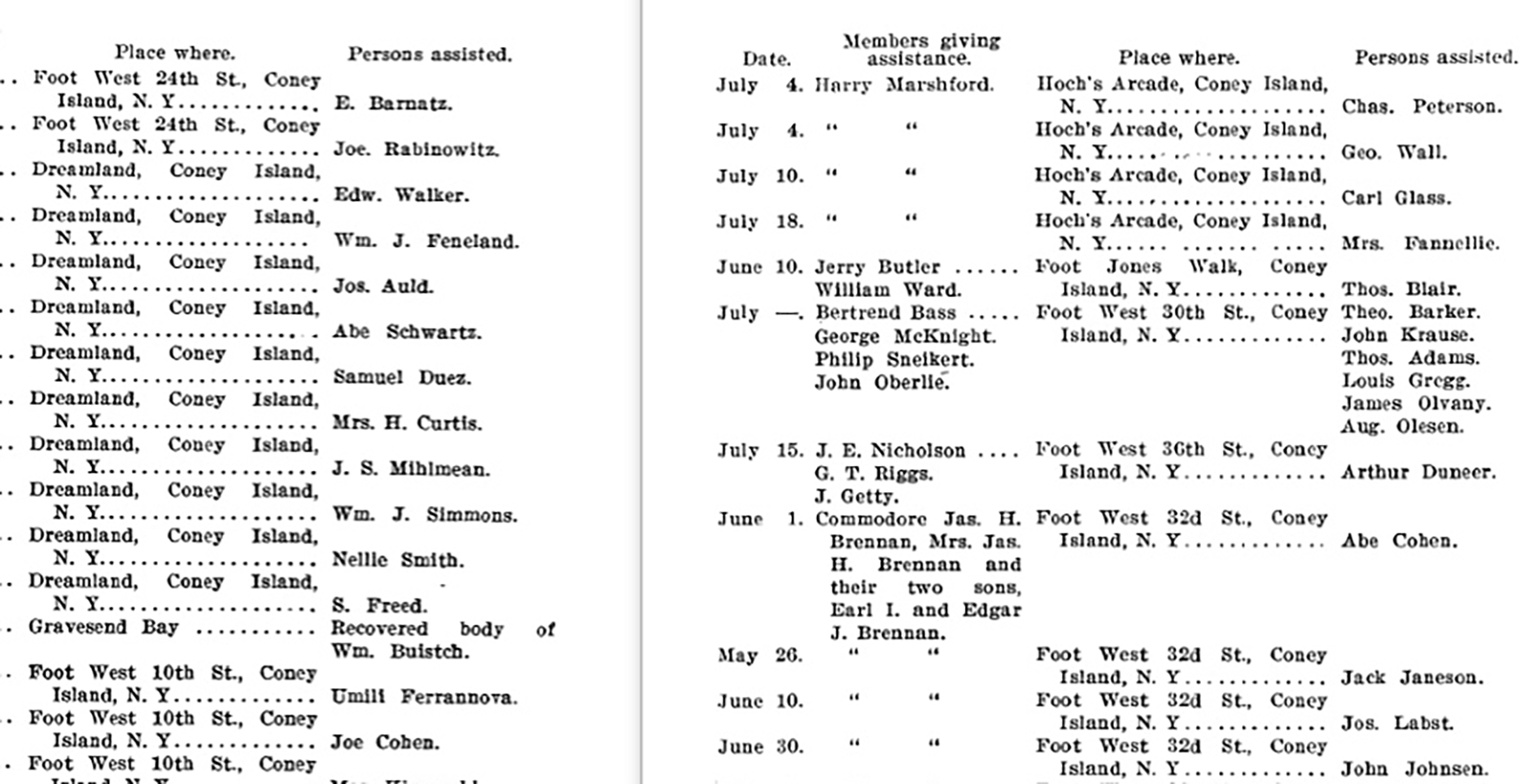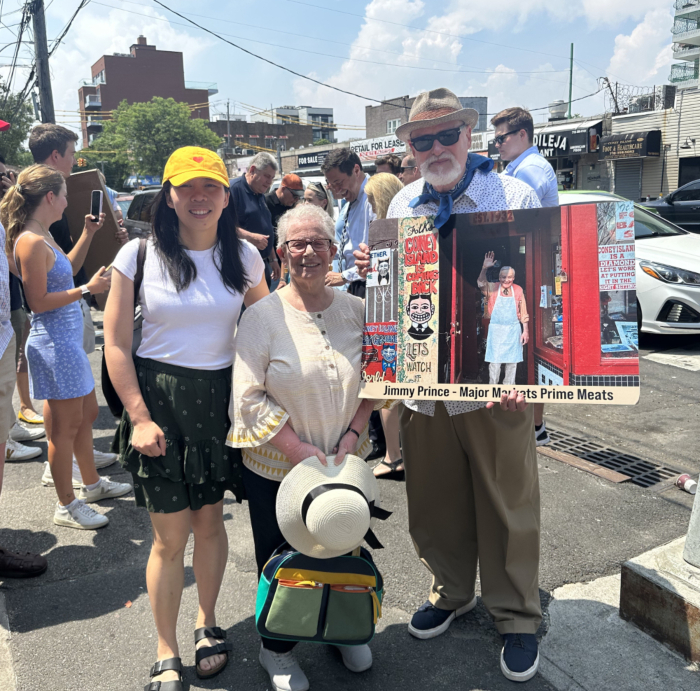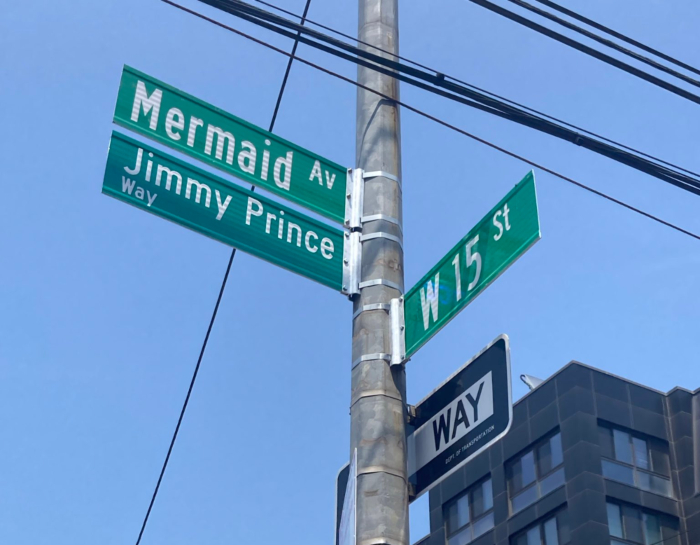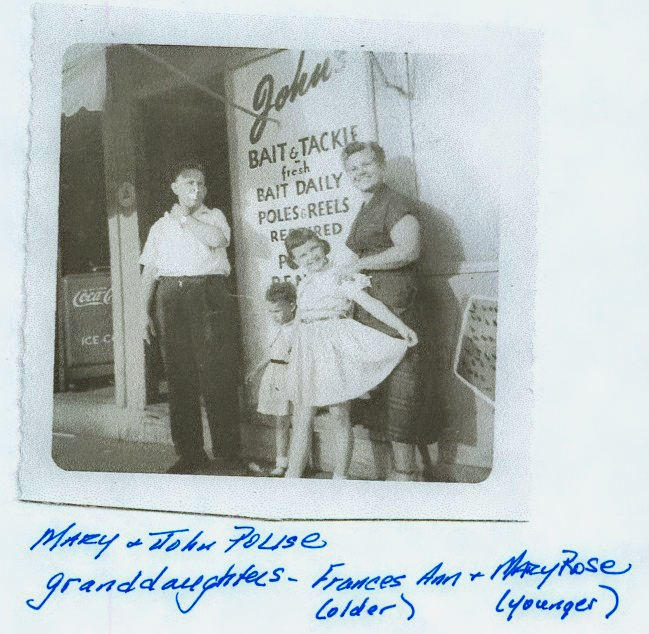
Last year, Cynthia Nuara of Queens, New York, sent a query to the Coney Island History Project asking if we had photos or information about her great-grandfather John Polise’s bait and tackle store. John's Bait & Tackle operated from the 1940s through 1974. “I believe it was near the old Thunderbolt roller coaster, perhaps where the Cyclones Stadium is now. I would love to find some prints, if they exist somewhere, to give to my mom and aunts,” she wrote.
By an amazing coincidence, we recorded an oral history interview in 2011 in which the owners of John's Bait & Tackle play a prominent role. In his oral history, Morris Egert, a self-described “greenhorn” from Poland, talks about "Mary and John" of the bait and tackle next door to his brand-new food stand on West 16th Street in Coney Island in 1951. He vividly describes the kindness of Cynthia Nuara’s great-grandparents, who saved the Egert family’s business by teaching them how to make Italian food.
"When we opened up, my mother made a gefilte fish and chopped liver and knishes," Egert recalls. "And this wonderful lady, Mary, came in. She says, you know, this is not the right place here. You want that? You gotta go up 29th Street, 30th Street. You're in the wrong place for this. And this wonderful lady really saved us. She came in and she taught us how to make pizza and sausage and peppers. And we ate up the chopped liver.“ Morris Egert went on to become a successful caterer.
“I knew my great-grandmother well, she died when I was 12,” wrote Nuara, after listening to Egert's oral history. “She was super opinionated so this interview is making me smile. I can just see her re-doing this guy’s whole business! And before the bait and tackle, they did own a restaurant.”
Nuara's great-aunt Gail Polise, whose late husband Vincent was John and Mary's son, shared the following information, family photos and business cards. They tell the history of the Polise family's businesses in Coney Island, starting with a restaurant with furnished rooms in 1929.
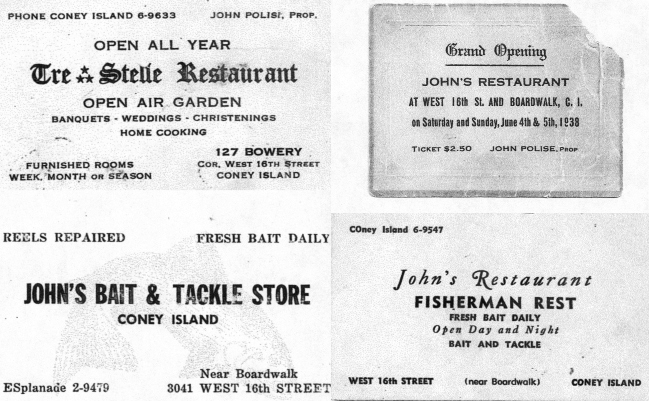
Coney Island business cards in chronological order from 1929 through the 1970s, clockwise from top left. Photo courtesy of the Polise family.
"John Polise was an Italian immigrant from Capri, Italy. He was proprietor and chef of Santa Lucia, an Italian restaurant in Williamsburg, Brooklyn. There he met and married Mary Scotti, a Williamsburg native. Their children, Rose and Vincent, were born in Williamsburg. Having grown up on the Isle of Capri, it was only fitting that John was drawn to Coney Island. In 1929 he and Mary moved their family and business to Coney Island.
"John's first venture in Coney Island was the Tre Stelle Restaurant and seasonal rentals on the Bowery. The restaurant occupied a large ground level area and the rental rooms were above. John and Mary seasonally accommodated and fed tourists and visitors to the Island. It was very hard work and their livelihood for almost nine years, until John opted for a restaurant only. Mary was then relieved of the responsibility of the rental rooms. In 1938 he opened John's Restaurant at West 16th Street and the Boardwalk. Vinny remembered he and his sister helping to bus dishes and set tables. The restaurant business, although successful, was labor intensive. In the 1940s John began to transition to a bait and tackle only venue. He operated John's Bait & Tackle from then until 1974. He was located on West 16 Street near the Boardwalk entrance closest to the pier. John, Mary, Vinny, and Rose worked long hours and happily catered to the needs of the Coney Island fisherman.
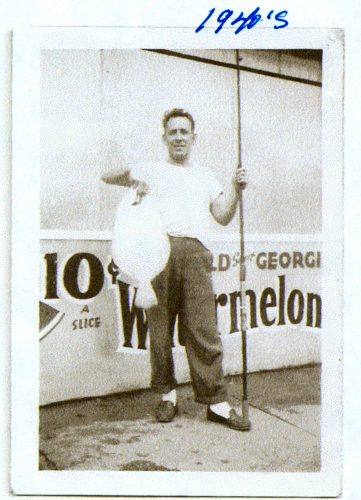
John Polise with the day's catch. Photo courtesy of the Polise family.
"According to Vinny, Coney Island was a wonderful place to grow up. He loved the atmosphere and the people. During the season it was bustling with people, excitement and opportunities to earn a few extra pennies by selling soap slices outside the bathhouses or 'barking' at a concession or selling homemade bags of confetti for the end of season Mardi Gras. The winter was desolate for those who lived there year round. However, the friendships were hard and fast. Both he and Rose had lifelong Coney Island friends. After their years on the Bowery, the family lived in various Coney Island apartments, until they settled into an apartment at 1526 Mermaid Avenue."
Vincent Polise was a public school teacher in New York City and lived in Coney Island until 1961. Rose raised her family (including Mary Celentano, Cynthia’s mom) on West 17th Street until they moved to Staten Island in 1965. If you have any snapshots of John's Bait & Tackle or John's Restaurant, please send to info@coneyislandhistory.org and we'll be happy to forward to the Polise family. --Tricia Vita

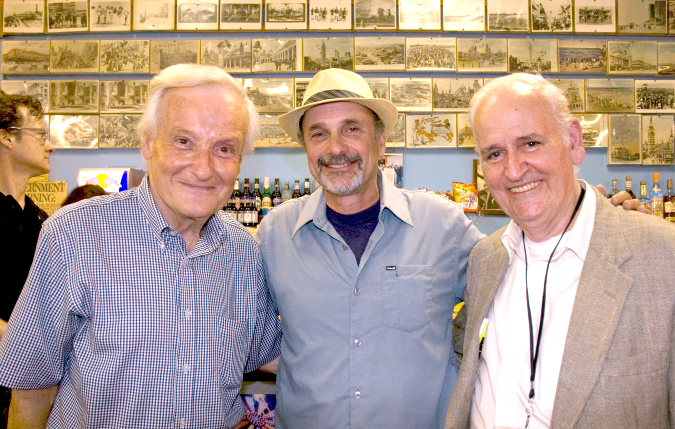
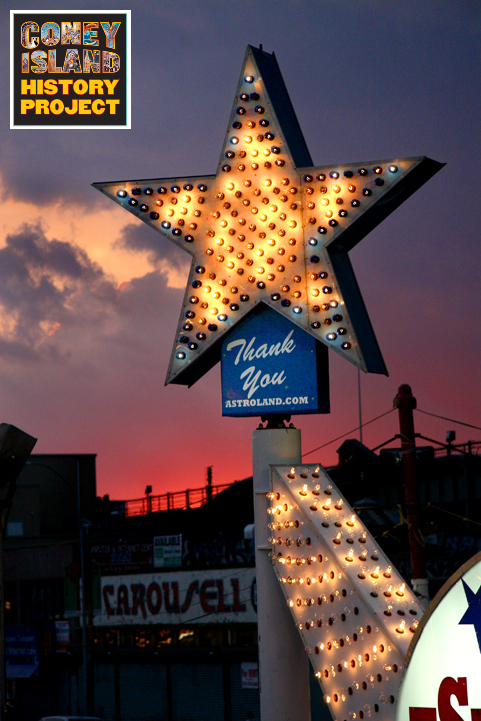
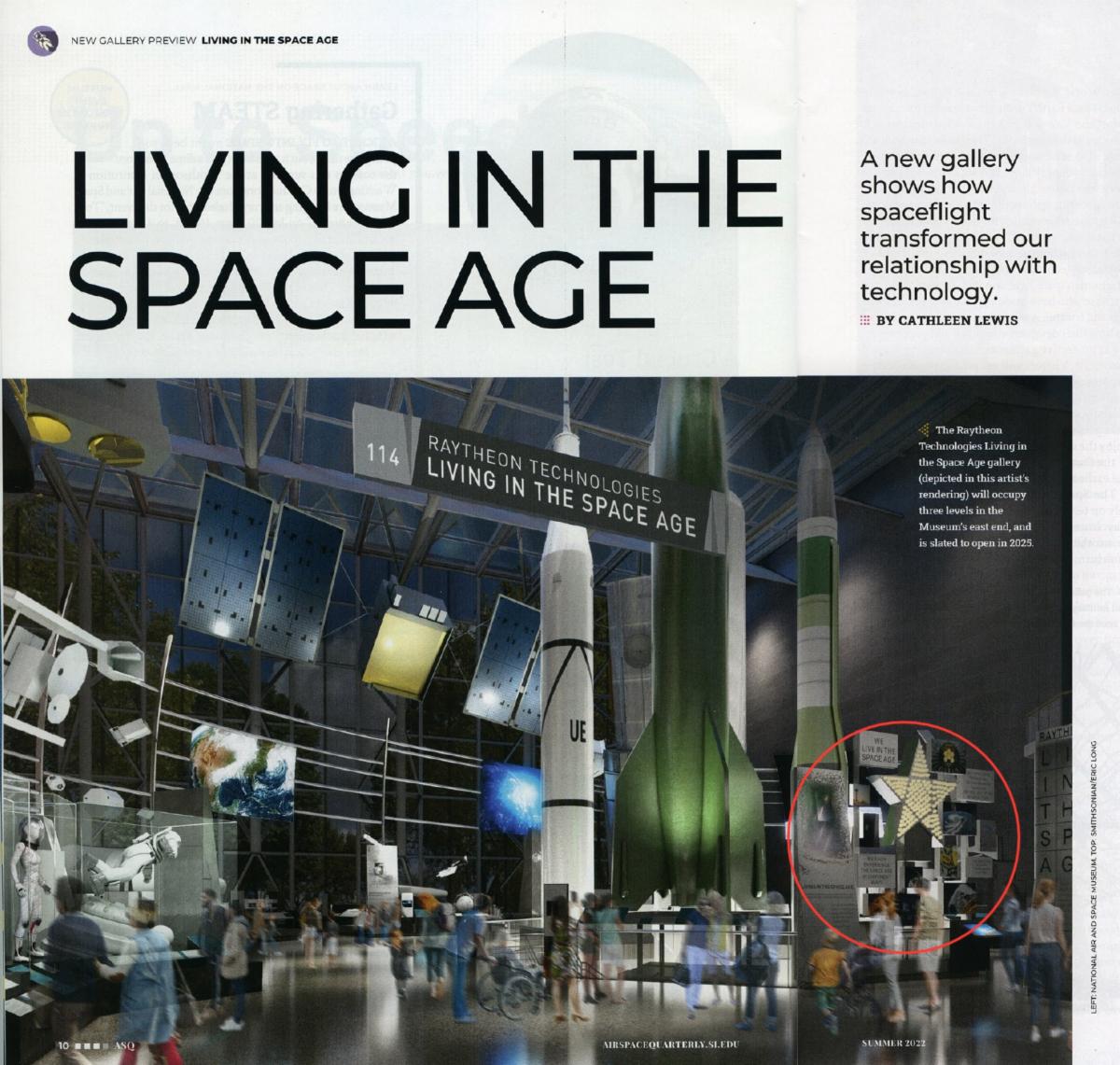
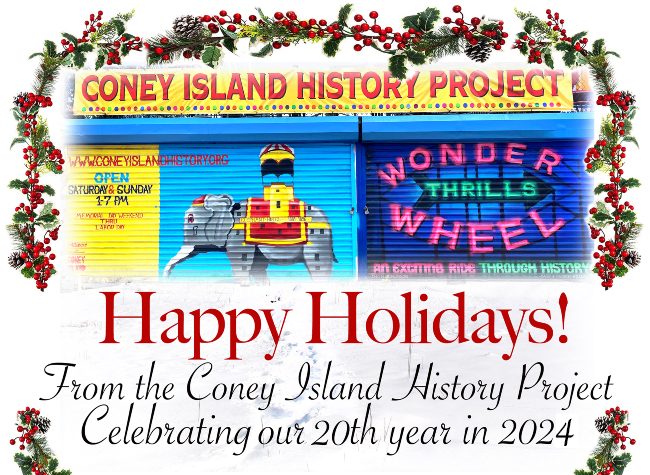
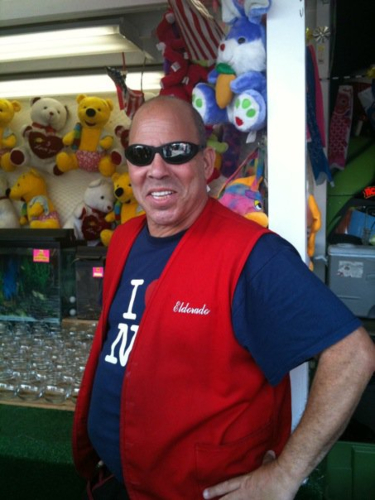
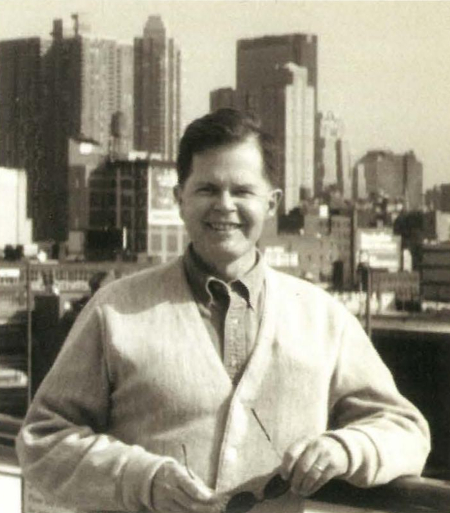
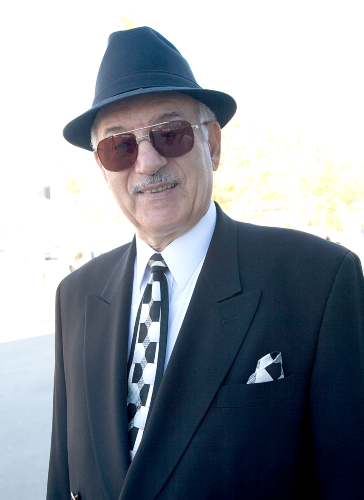
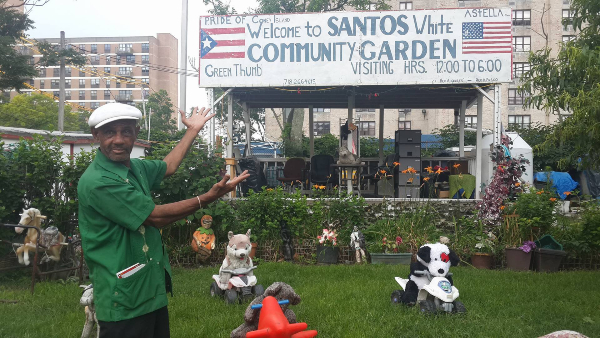
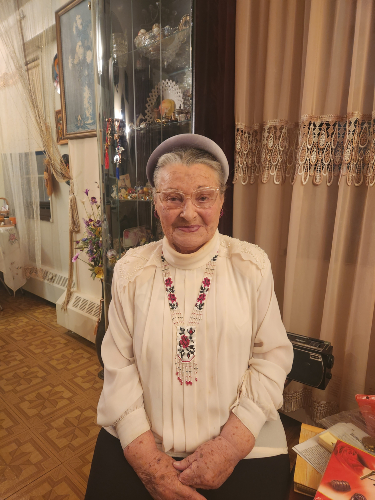
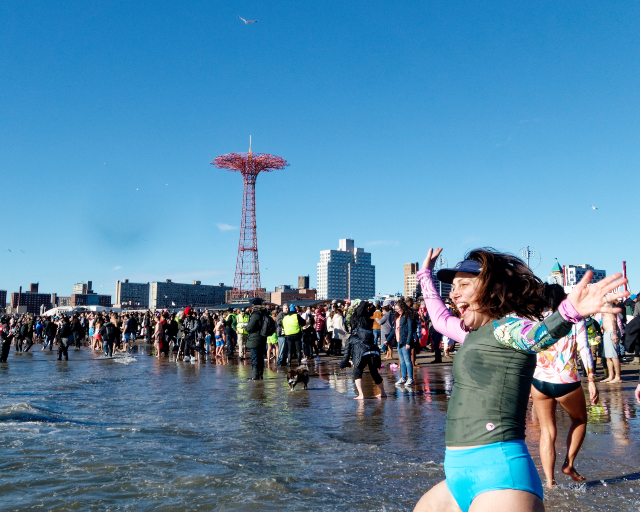
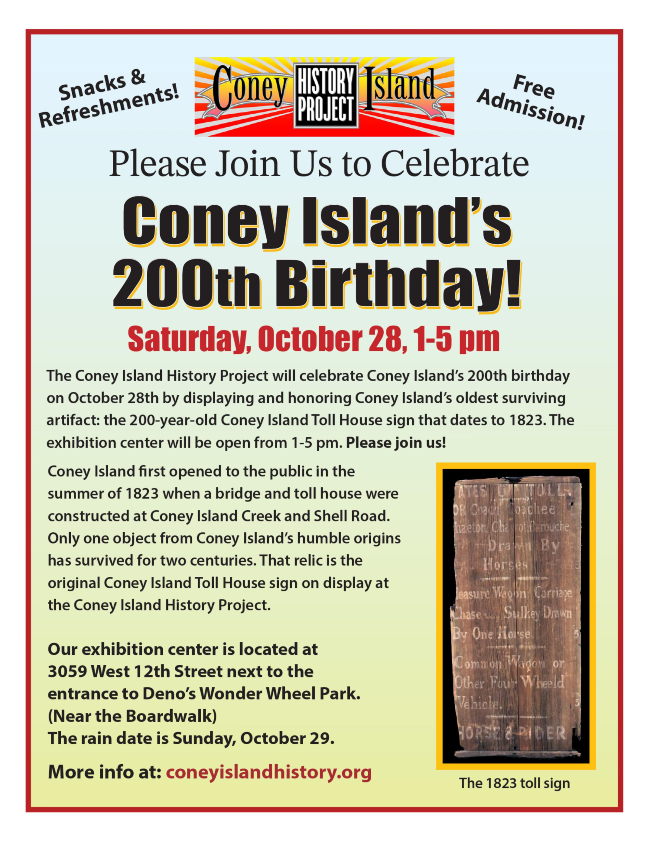
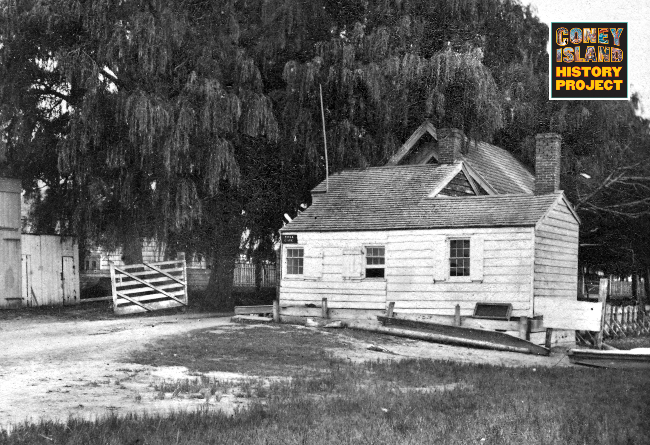
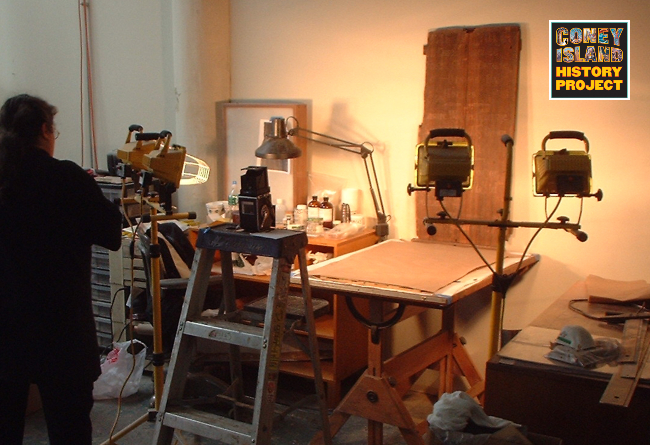
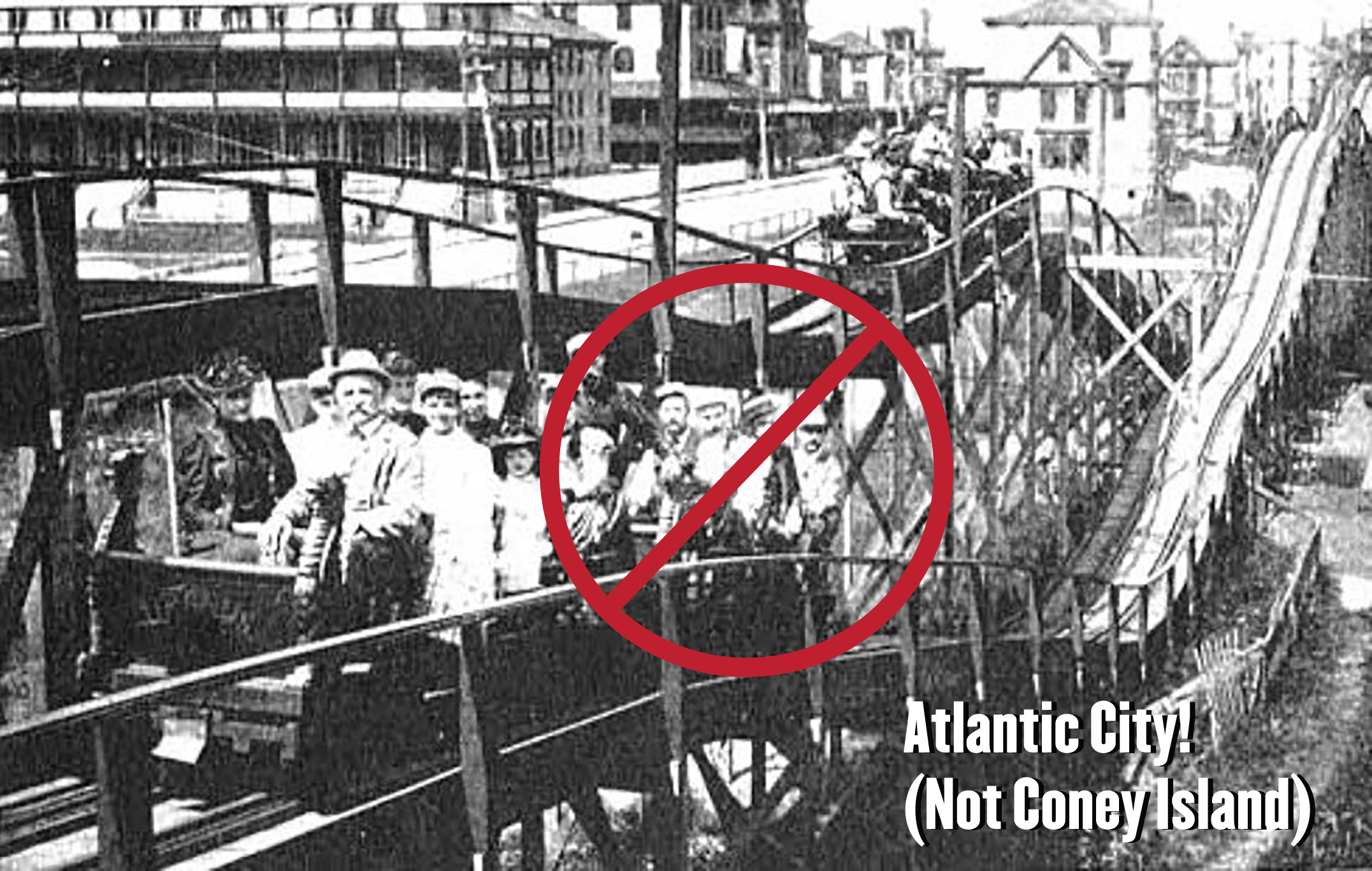
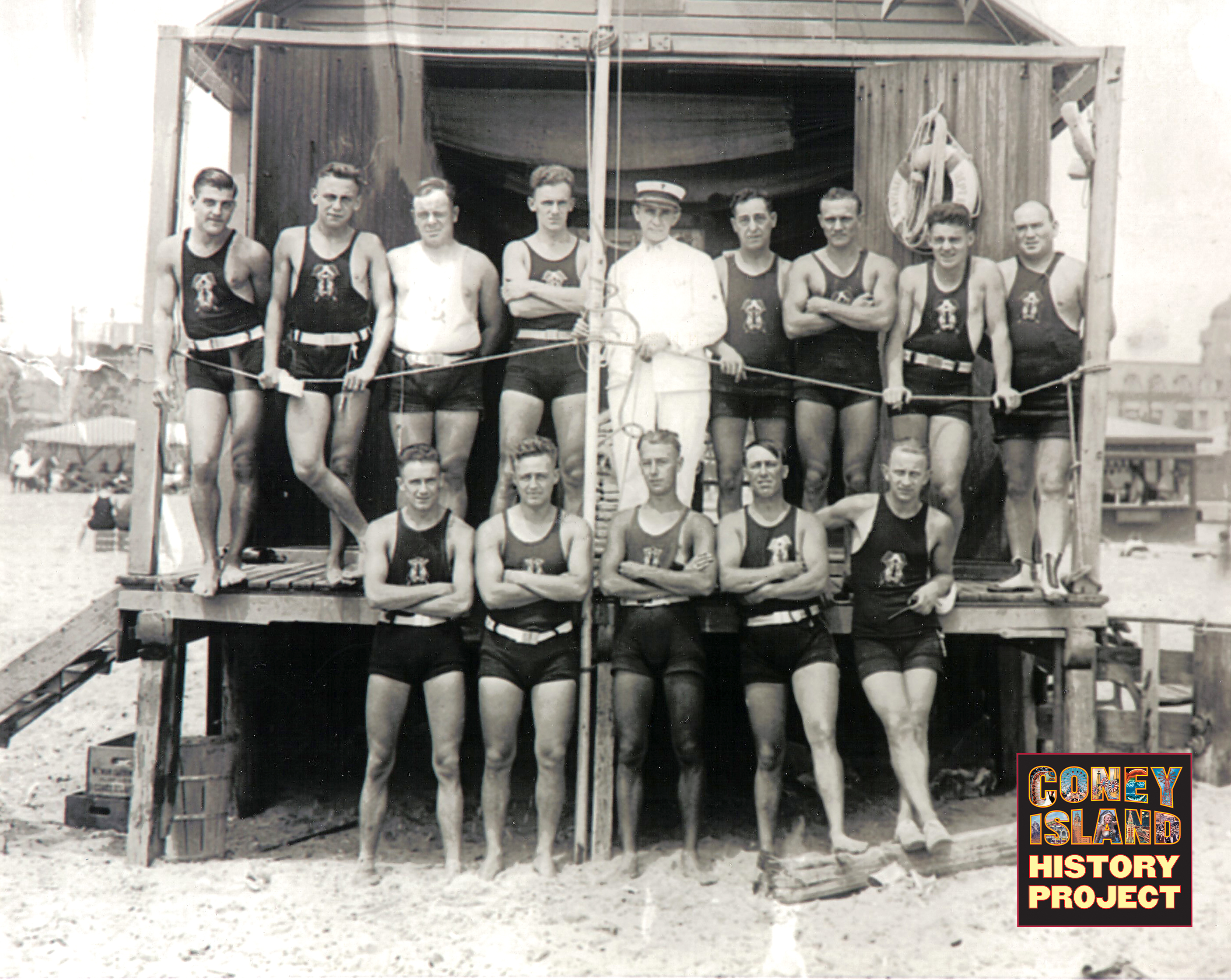 U.S. Volunteer Life Saving Corps lifeguards at their headquarters on the beach at West Fifth Street, Coney Island, c.1919.
U.S. Volunteer Life Saving Corps lifeguards at their headquarters on the beach at West Fifth Street, Coney Island, c.1919.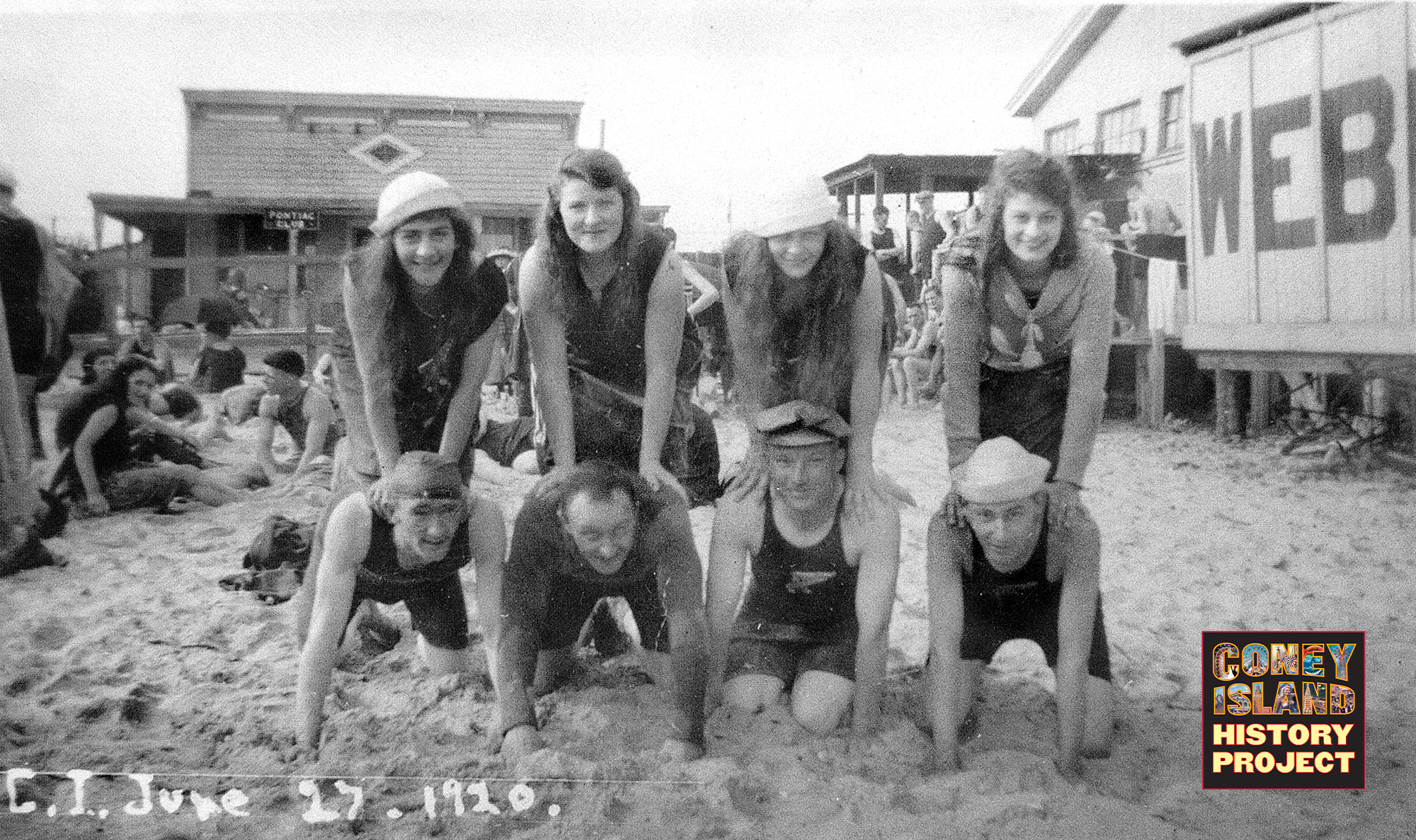
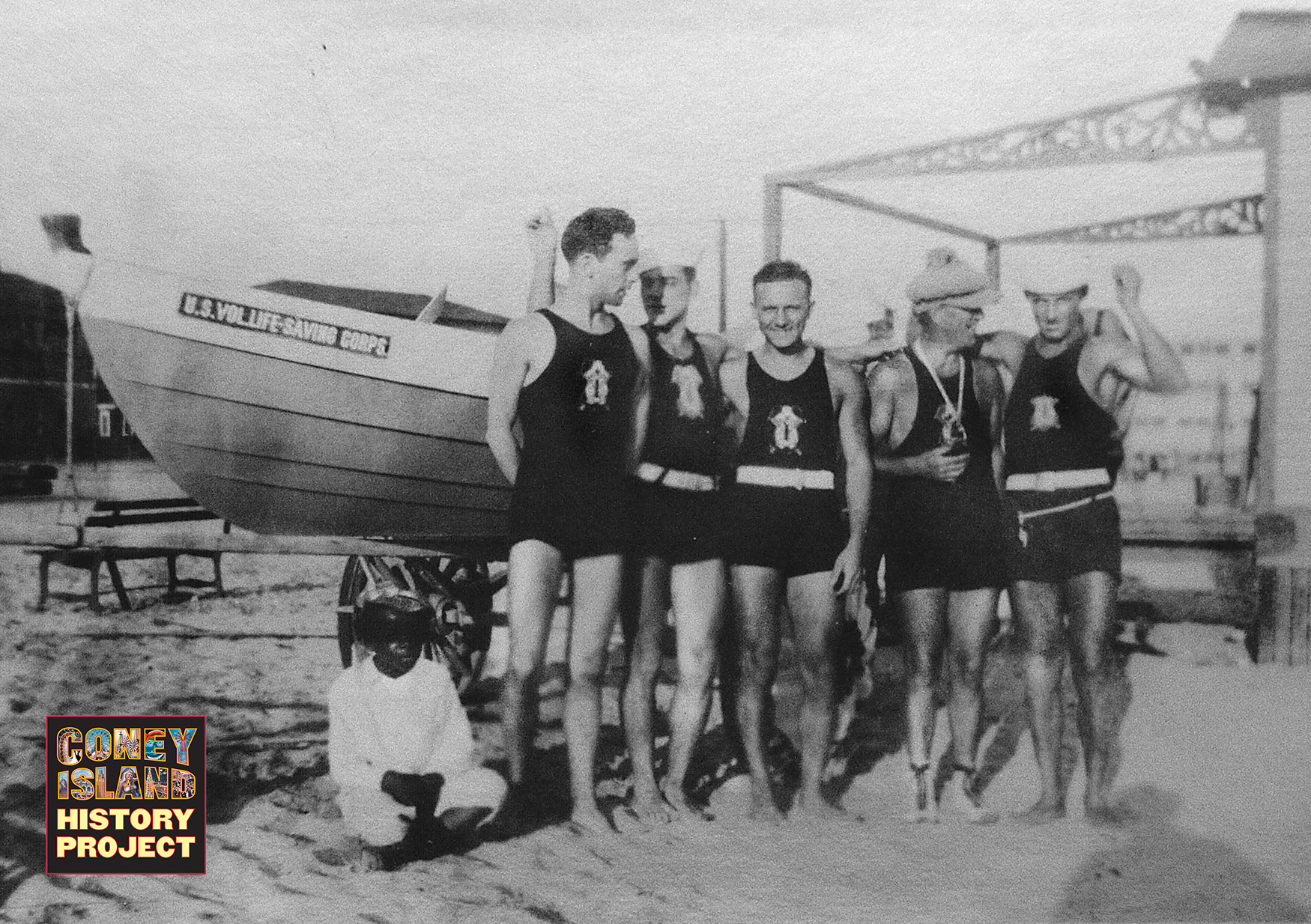
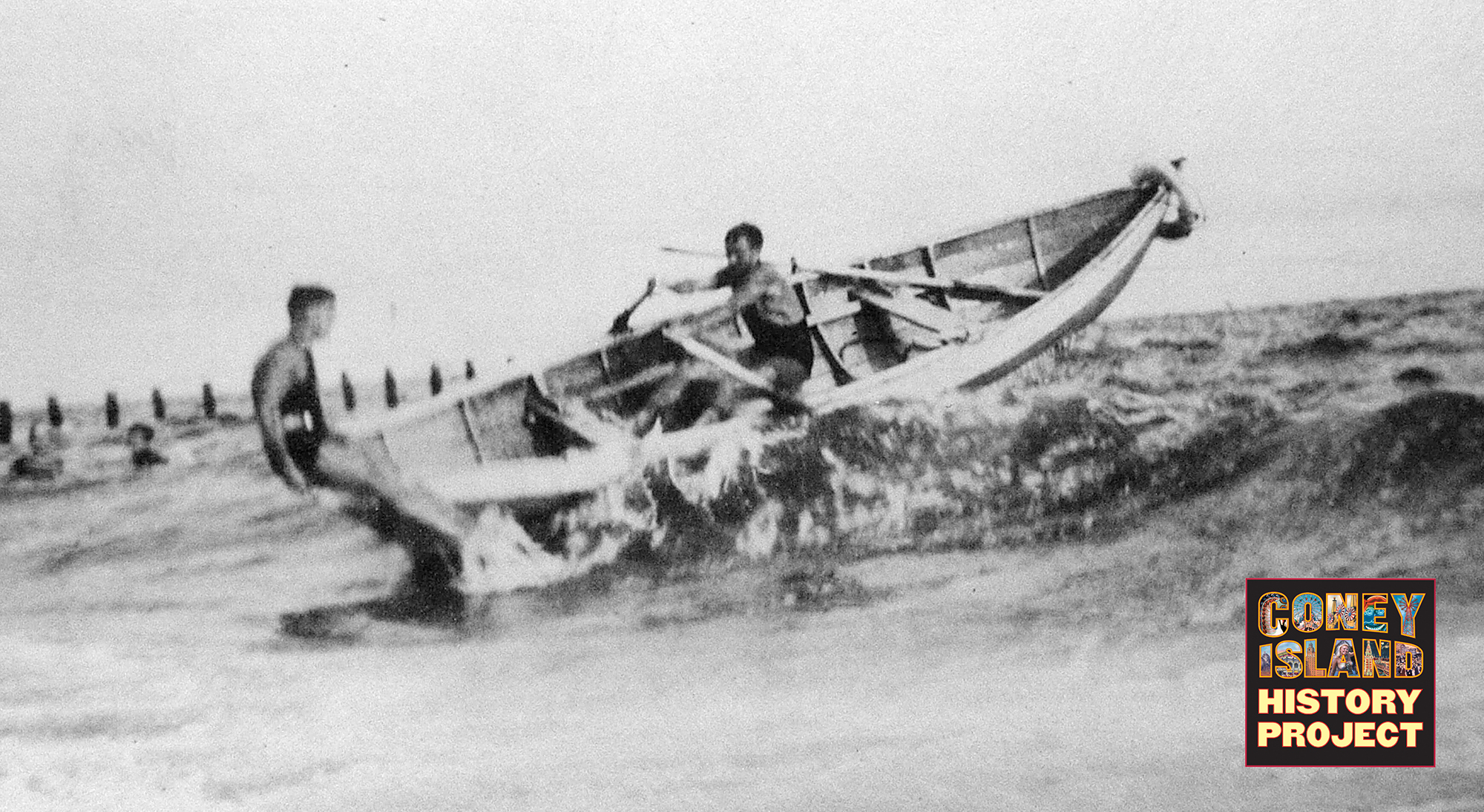
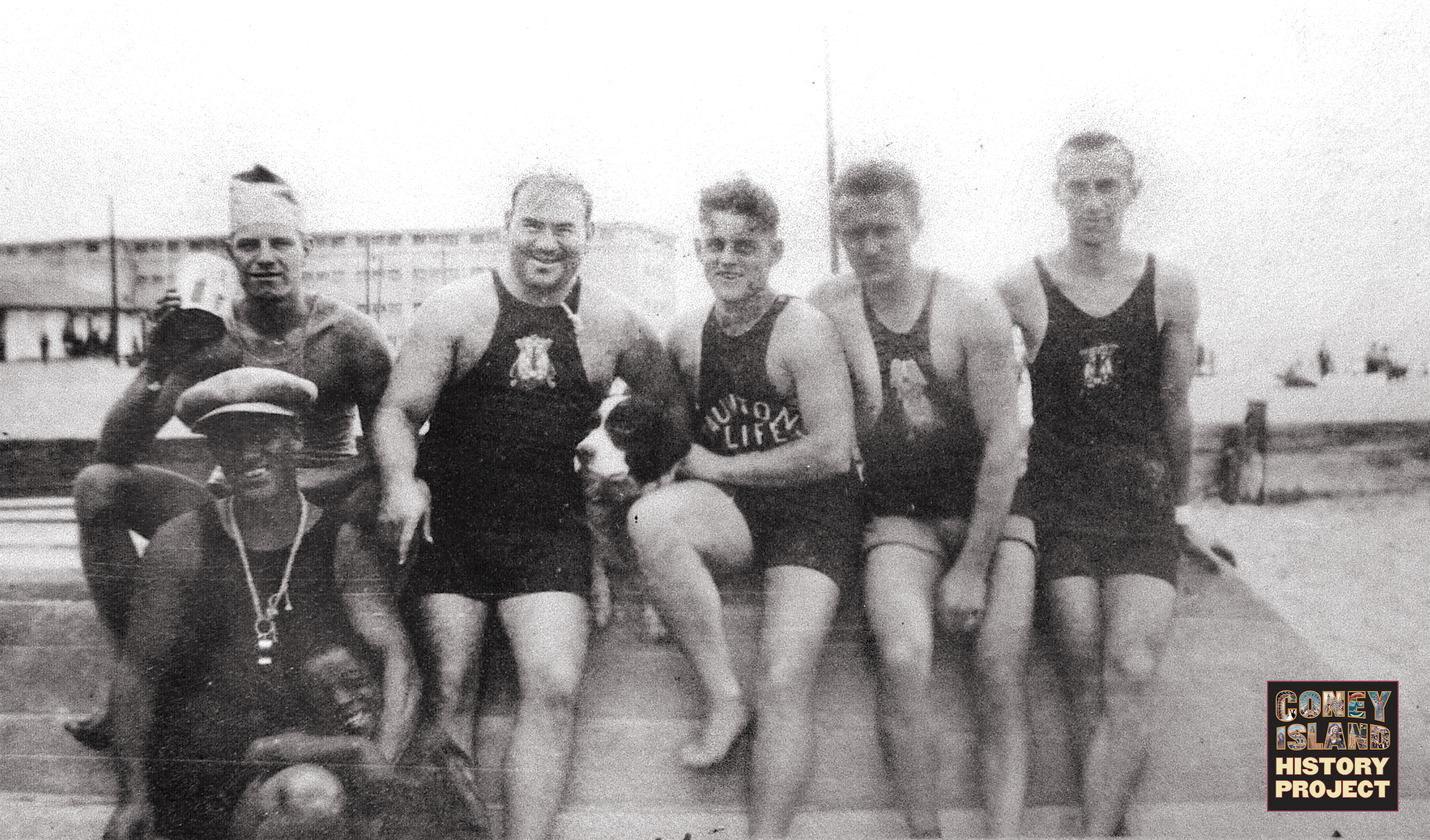 Volunteer lifeguards on the Coney Island Beach, 1920. Ernest Gross is second from right. (Dog at center was not a lifeguard.) The Municipal Bathhouse can be seen behind them.
Volunteer lifeguards on the Coney Island Beach, 1920. Ernest Gross is second from right. (Dog at center was not a lifeguard.) The Municipal Bathhouse can be seen behind them. 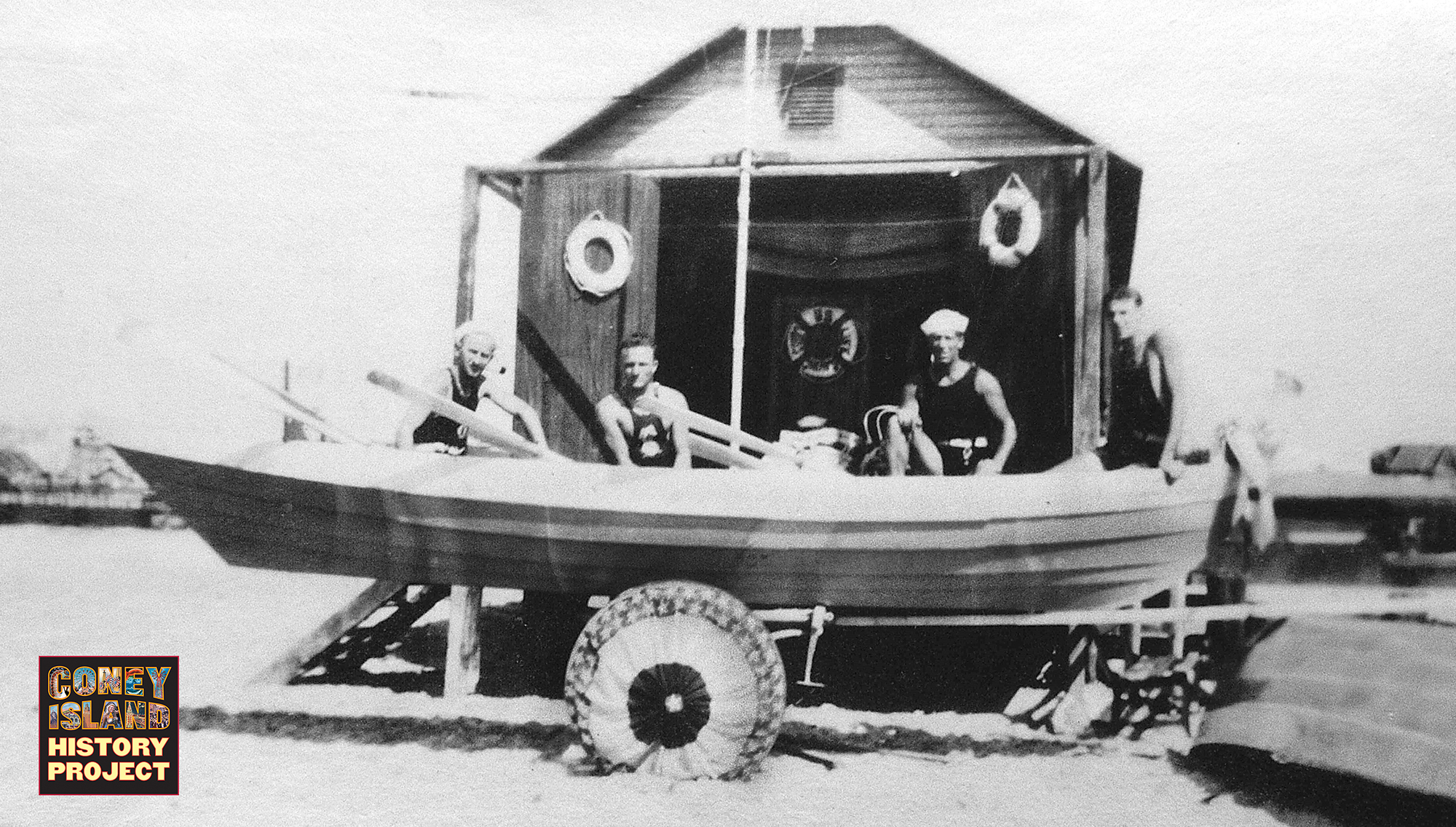 Lifeguards at the Coney Island boathouse.
Lifeguards at the Coney Island boathouse.